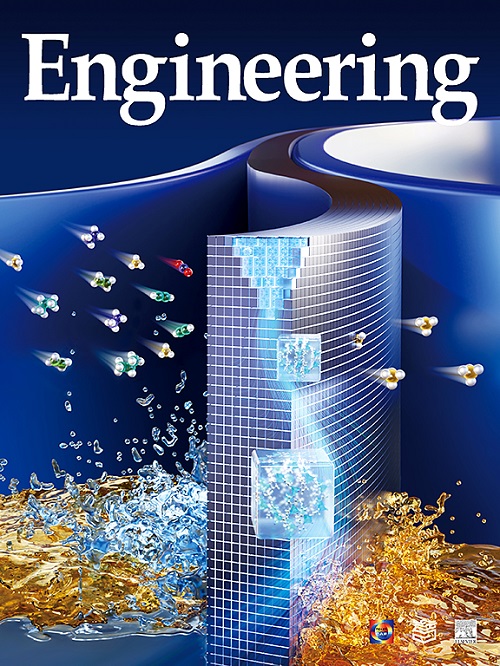Nanocutting of Ultrathin Vertically Aligned InSe Ribbons for Strain Engineering
IF 11.6
1区 工程技术
Q1 ENGINEERING, MULTIDISCIPLINARY
引用次数: 0
Abstract
Inorganic semiconductors play a pivotal role in various technological applications; however, their inherent brittleness limits their utilization in flexible electronics. Thinning materials such as glass fibers and silicon enhances flexibility while preserving mechanical properties. The focus of this research lies in strain engineering within indium selenide (InSe), a representative type of inorganic semiconductor renowned for its exceptional electron mobility and adjustable bandgap. By means of nanoskiving, ultrathin vertically aligned InSe ribbons were fabricated and subsequently transferred onto flexible polyethylene terephthalate (PET) substrates. The photoluminescence (PL) spectra revealed the tunability of the bandgap induced by strain, and the molecular dynamics (MD) simulations emphasized the influence of thickness on the mechanical properties. The vertically aligned InSe ribbons demonstrated an enhanced photoresponse under tensile strain in photodetectors, thereby demonstrating their potential for use in flexible optoelectronic devices. The nanocutting method results in novel mechanical and electronic properties, offering an alternative means to adjust the bandgap and facilitating the efficient fabrication of flexible optoelectronic devices with potential applications.应变工程中超薄垂直排列InSe带的纳米切割
无机半导体在各种技术应用中起着举足轻重的作用;然而,其固有的脆性限制了其在柔性电子器件中的应用。薄化材料如玻璃纤维和硅在保持机械性能的同时增强了柔韧性。本研究的重点在于硒化铟(InSe)的应变工程,硒化铟是一种典型的无机半导体,以其卓越的电子迁移率和可调节的带隙而闻名。通过纳米剥离,制备了超薄垂直排列的InSe带,并随后转移到柔性聚对苯二甲酸乙二醇酯(PET)衬底上。光致发光(PL)光谱揭示了应变诱导带隙的可调性,分子动力学(MD)模拟强调了厚度对力学性能的影响。垂直排列的InSe带在光电探测器的拉伸应变下表现出增强的光响应,从而证明了它们在柔性光电器件中的应用潜力。纳米切割方法产生了新的机械和电子性能,提供了一种调整带隙的替代方法,并促进了具有潜在应用价值的柔性光电器件的高效制造。
本文章由计算机程序翻译,如有差异,请以英文原文为准。
求助全文
约1分钟内获得全文
求助全文
来源期刊

Engineering
Environmental Science-Environmental Engineering
自引率
1.60%
发文量
335
审稿时长
35 days
期刊介绍:
Engineering, an international open-access journal initiated by the Chinese Academy of Engineering (CAE) in 2015, serves as a distinguished platform for disseminating cutting-edge advancements in engineering R&D, sharing major research outputs, and highlighting key achievements worldwide. The journal's objectives encompass reporting progress in engineering science, fostering discussions on hot topics, addressing areas of interest, challenges, and prospects in engineering development, while considering human and environmental well-being and ethics in engineering. It aims to inspire breakthroughs and innovations with profound economic and social significance, propelling them to advanced international standards and transforming them into a new productive force. Ultimately, this endeavor seeks to bring about positive changes globally, benefit humanity, and shape a new future.
 求助内容:
求助内容: 应助结果提醒方式:
应助结果提醒方式:


